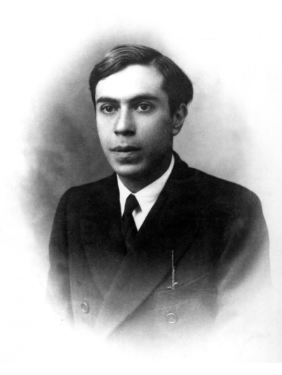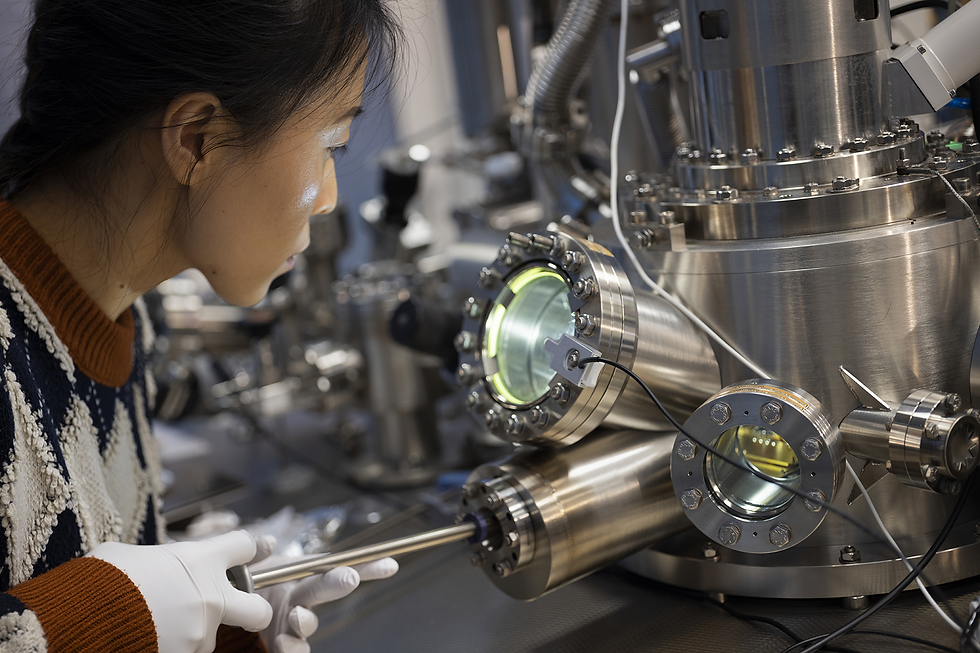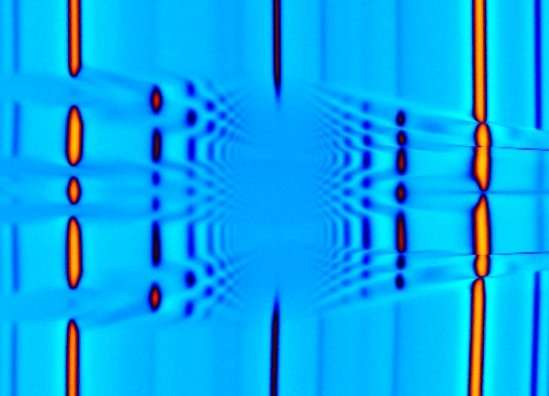Quantum computing with Microsoft's topological qubits
- mansour ansari
- Jan 22, 2023
- 5 min read

Non-Abelian anyons are related to Majorana fermions, which are a type of particle that are their own antiparticles. They were first proposed by the physicist Ettore Majorana in the 1930s.
Like non-Abelian anyons, Majorana fermions also have non-Abelian statistics.
In condensed matter physics, Majorana fermions have been proposed as a possible way to create qubits for use in topological quantum computing. Majorana fermions can be used to create non-Abelian anyons by bringing them together in a specific way, such as by creating a pair of them at the end of a topological superconductor.
When two Majorana fermions are brought together, they can form a non-Abelian anyon, which is a particle that has non-Abelian statistics. This means that the order in which operations are performed on the particles can affect the final state of the system. The non-Abelian anyons formed by Majorana fermions are called Majorana zero modes.
Majorana zero modes are considered to be a promising platform for topological quantum computing because they are robust against certain types of noise and errors, and are non-Abelian in nature, which means that the order of operations on the qubits can affect the final state of the system. This makes them suitable for storing and manipulating quantum information.
In summary, non-Abelian anyons are related to Majorana fermions, which are a type of particle that have non-Abelian statistics. Majorana fermions can be used to create non-Abelian anyons by bringing them together in a specific way, such as by creating a pair of them at the end of a topological superconductor. These non-Abelian anyons, called Majorana zero modes, are considered to be a promising platform for topological quantum computing because they are robust against certain types of noise and errors, and are non-Abelian in nature.

Microsoft's approach to quantum computing is based on the use of topological qubits, which are a type of qubit that are based on the properties of non-Abelian anyons. These qubits are considered to be robust against certain types of noise and errors, which makes them an attractive option for building large-scale quantum computers. One of the key advantages of topological qubits is their high-fidelity gates, which means that the operations are performed quickly and with high accuracy. This makes topological qubits an attractive option for applications that require fast and accurate quantum computation, such as quantum optimization and quantum machine learning.
Another advantage of topological qubits is their long coherence times, which means that the qubits can maintain their quantum state for a long period of time before decohering. This makes topological qubits an attractive option for applications that require high-precision control, such as quantum simulation and quantum cryptography.
In addition to its work on topological qubits, Microsoft is also developing a full-stack software ecosystem for quantum computing, which includes a quantum programming language, a quantum development kit, and a quantum operating system. This ecosystem is designed to make it easy for developers to create and run quantum algorithms, and is an important part of Microsoft's approach to quantum computing.
Furthermore, Microsoft's approach to quantum computing is also based on the use of a topological approach, which is a way to build a quantum computer based on the properties of topological materials, such as anyons. This approach is considered to be more robust against noise and errors than other quantum computing architectures, and is expected to be more scalable. In summary, Microsoft's approach to quantum computing is based on the use of topological qubits, which are a type of qubit that are based on the properties of non-Abelian anyons. The advantages of topological qubits are high-fidelity gates, long coherence times, and the robustness against certain types of noise and errors. These advantages make it a promising technology for building large-scale quantum computers.

What non-Abelian anyons are: Non-Abelian anyons are subatomic particles that exist in two-dimensional systems, such as the surface of a topological insulator or in a fractional quantum Hall system. They have properties that are distinct from both bosons and fermions, which are the two types of particles found in three-dimensional systems.
One of the key properties of non-Abelian anyons is that their quantum states are not determined by the total number of particles, but by the arrangement of the particles. This means that the order in which operations are performed on the particles can affect the final state of the system. This property is known as non-Abelian statistics.
Non-Abelian anyons are also topological in nature, meaning that their properties are determined by the global properties of the system, rather than the local properties. This makes them robust against certain types of noise and errors, which makes them an attractive option for building quantum computers.
In quantum computing, the non-Abelian anyons can be used to create qubits, which are the basic building blocks of quantum computers. The qubits based on non-Abelian anyons are known as topological qubits, which are considered to be more robust and more scalable than other types of qubits.
In short, non-Abelian anyons are subatomic particles that have distinct properties from both bosons and fermions and have non-Abelian statistics, meaning that the order in which operations are performed on the particles can affect the final state of the system. They are topological in nature, which makes them robust against certain types of noise and errors. In quantum computing, non-Abelian anyons can be used to create topological qubits, which are considered to be more robust and more scalable than other types of qubits.
Condensed matter physics is a field of physics that studies the properties and behavior of matter in its condensed phases, such as solids and liquids. This includes the study of materials and their physical properties, such as electrical, magnetic, and optical properties. It also includes the study of phase transitions, such as melting and freezing, as well as the behavior of matter under extreme conditions, such as high pressure and temperature. Condensed matter physics also encompasses the study of condensed matter systems at the atomic and subatomic level, such as the behavior of electrons and other subatomic particles in materials. It's an interdisciplinary field that draws on the concepts and techniques from other branches of physics, such as quantum mechanics, statistical mechanics, and solid-state physics.
Pictures:
In a historic milestone, Azure Quantum demonstrates formerly elusive physics needed to build scalable topological qubits
Bosons are a type of subatomic particle that obey Bose-Einstein statistics. They have integer spin, meaning that their intrinsic angular momentum is a whole number, such as 0, 1, 2, etc. Bosons are named after the Indian physicist Satyendra Nath Bose, who first proposed the concept of these particles. They have distinct properties compared to fermions, which have half-integer spin and obey Fermi-Dirac statistics.
Bosons are particles that can exist in the same state, and they are responsible for the forces that mediate the interactions between other subatomic particles. For example, photons are bosons that mediate the electromagnetic force, and gluons are bosons that mediate the strong nuclear force. Additionally, bosons are responsible for the phenomenon of Bose-Einstein condensation, which occurs when a collection of bosons is cooled to extremely low temperatures and forms a single entity.
In summary, Bosons are subatomic particles that have integer spin, follow Bose-Einstein statistics, and can exist in the same state. They are responsible for the forces that mediate the interactions between other subatomic particles and phenomena such as Bose-Einstein condensation.

Comentarios